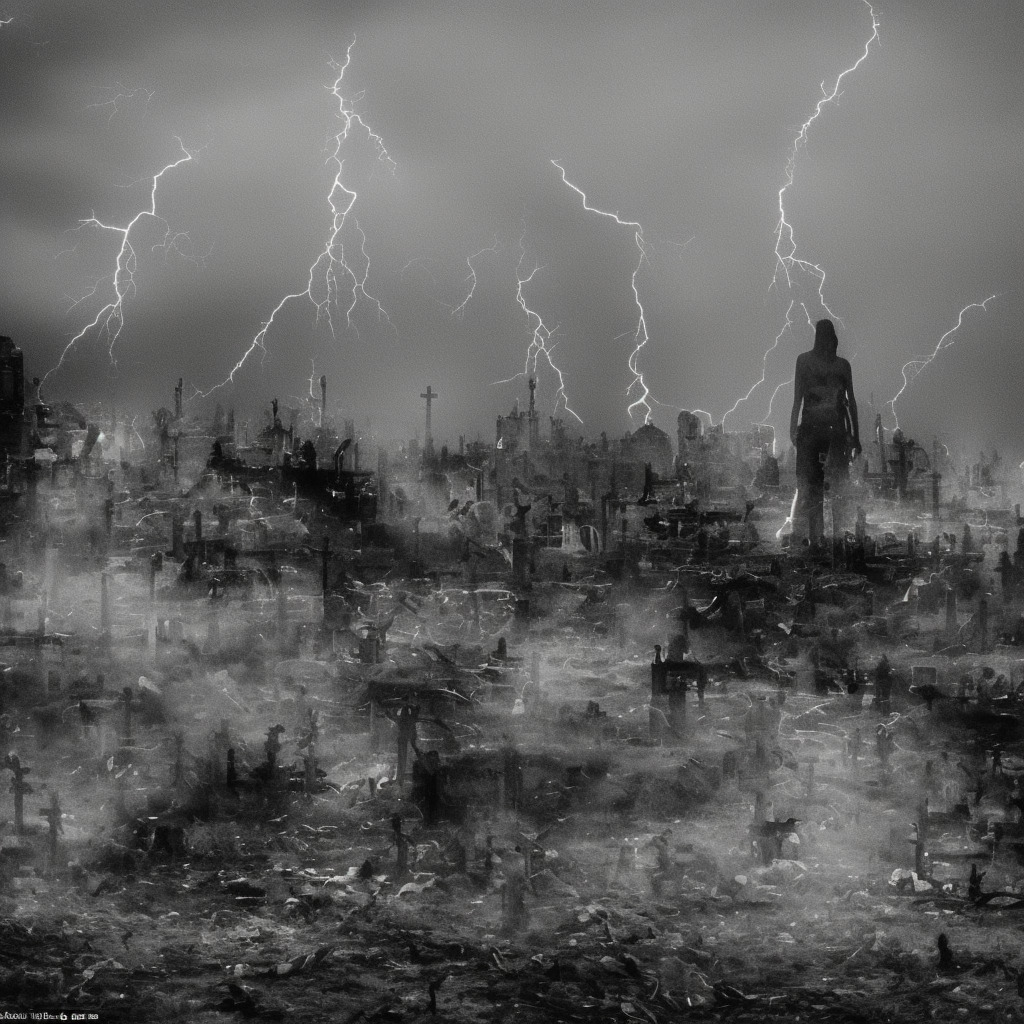Pearl Jam: The Architects of Grunge Era and the Story Behind ‘Jeremy’
Pearl Jam rose to prominence as a defining force in the grunge scene. ‘Jeremy’, a key track in their repertoire, exemplified the band’s narrative depth and societal commentary, cementing their status as rock icons.

**Pearl Jam**, an iconic pillar of the grunge movement, took the music world by storm in the early 1990s. Their song ‘Jeremy’, in particular, stands as a monumental piece that not only skyrocketed the band’s fame but also highlighted their unique narrative style and commitment to addressing serious social issues. With Eddie Vedder’s haunting vocals and the band’s raw sound, ‘Jeremy’ became a significant part of their identity.
The band’s origins trace back to Seattle, Washington, in 1990, a city that was the epicenter for the grunge genre. Formed by Stone Gossard and Jeff Ament, along with Mike McCready, they were soon joined by Eddie Vedder, who would later become the voice and face of Pearl Jam. Their early days were marked by a shared desire to blend hard rock with poignant storytelling, a vision that culminated with their debut album ‘Ten’, which included ‘Jeremy’.
Pearl Jam’s influence was unmatched during the era surrounding the release of ‘Jeremy’. At a time when grunge was challenging traditional rock music norms, Pearl Jam emerged as leading figures. The song itself was inspired by a tragic true story, capturing the zeitgeist with its intense themes and striking honesty. More than just a hit, it was a testament to the band’s fearless approach to music and their ability to connect with listeners on a profound level.
Unveiling the Craft: Eddie Vedder and Jeff Ament’s Compositional Brilliance
Eddie Vedder and Jeff Ament crafted the poignant soundscape behind ‘Jeremy,’ blending Vedder’s emotive vocals with Ament’s powerful bass lines, leaving a lasting impact on the grunge genre.

Background and Career: Diving first into the background of the composers behind ‘Jeremy,’ we acknowledge the artistry of Eddie Vedder and Jeff Ament. Eddie Vedder, Pearl Jam’s frontman, is not only a powerful vocalist but also an accomplished songwriter and composer. With roots in rock and grunge, Vedder’s musical journey began in the San Diego punk scene before he cemented his status as a seminal figure in 1990s alternative music. Jeff Ament, Pearl Jam’s bassist, also shares a vital role in the song’s creation. Ament’s career trajectory includes his time with pivotal Seattle bands such as Green River and Mother Love Bone, which paved the way for the birth of Pearl Jam.
Musical Style and Influences: Both Vedder and Ament have an intrinsic knack for blending raw emotion with melodic soundscapes. Vedder’s style rings with a depth often influenced by folk and classic rock, while Ament’s bass-driven sounds resonate with punk energy and melodic sensibility. Their combined efforts are heavily inspired by the Seattle grunge scene—a mix of disillusionment and urgency that gives ‘Jeremy’ its haunting yet captivating aura. Their music also draws from the broader rock narrative, carved by legends like The Who and Neil Young.
Role in the Song’s Creation and Impact: In ‘Jeremy,’ Vedder’s role extended beyond writing lyrics; his masterful composition paired with Ament’s brooding bass lines created a sonic tapestry that conveyed complex emotions. Vedder’s voice, characterized by deep, resonant tones, is perfectly complemented by Ament’s gripping chord progressions, offering listeners a visceral landscape to explore. Their synergy is unmistakeable, adding a unique personality to the track that was not only pivotal to its success but also left an indelible mark on the grunge genre.
Celebrating Success: Awards and Covers of ‘Jeremy’
Explore the awards, accolades, and notable covers of Pearl Jam’s “Jeremy,” a song celebrated for its profound impact and cinematic presence.

Pearl Jam’s iconic song “Jeremy” has not only left an indelible mark on the grunge movement of the early 1990s but has also been recognized for its impact and artistry through numerous awards and nominations. One of the most notable accolades came at the MTV Video Music Awards in 1993, where the song’s hauntingly powerful music video won four awards, including Best Video of the Year. This achievement highlighted both the artistic merit of the song itself and the compelling visuals that accompanied it, further cementing its status in the annals of rock music history.
In addition to its award triumphs, “Jeremy” has been embraced by a variety of artists across different genres, each bringing their unique interpretation of the poignant anthem. Notable covers include versions by renowned musicians such as Bush, whose raw take on the classic track added a new dimension to its already deep emotional resonance. These covers have kept the song alive in the public consciousness, allowing new generations to experience the powerful narrative Pearl Jam originally crafted.
Beyond awards and covers, “Jeremy” has found its way into popular culture through appearances in television shows and films, further solidifying its influence. While not as commercialized as some of its contemporaries, the song’s inclusion in media projects underscores its enduring relevance and its ability to evoke profound emotional reactions. As a testament to its lasting legacy, “Jeremy” continues to be celebrated as one of Pearl Jam’s most impactful works, a song that transcends its time to remain a significant piece of musical artistry.
Chart Success: The Ascension of ‘Jeremy’
Released in 1992, ‘Jeremy’ by Pearl Jam was a cultural milestone in the grunge era. Although not a pop chart-topper, its powerful narrative, robust marketing, and live performances cemented its place in rock history, influencing Pearl Jam’s trajectory and reinforcing their musical distinction.

Released on August 17, 1992, ‘Jeremy’ by Pearl Jam became a defining moment in the band’s illustrious career. The song was the third single off their debut album, ‘Ten,’ which had already made waves in the rock music scene. Despite not charting as spectacularly as some pop anthems of its era, ‘Jeremy’ solidified its place in rock history by reaching a peak position of number five on the Billboard Mainstream Rock Tracks. Overseas, it also made its mark by climbing to number 15 on the UK Singles Chart, emphasizing its universal appeal.
In comparison to other tracks on the charts at the time, ‘Jeremy’ emerged as more of a cult classic than a global chart-topping phenomenon. However, this did not hinder its impact; instead, it set it apart, positioning Pearl Jam as leaders of the grunge movement rather than mere followers. The song played a pivotal role in Pearl Jam’s career by exposing the raw emotional depth and storytelling prowess of the band, qualities that became hallmarks of their musical identity.
The release of ‘Jeremy’ was supported by an aggressive marketing push by their label, Epic Records. Pearl Jam distinguished themselves with evocative live performances that captured the haunting narrative of the song. The accompanying music video, controversial and provocative, became a sensational topic in media spaces, further amplifying the song’s reach and audience engagement. Critical reception was generally positive, noting the song’s lyrical potency and poignant message. Over the years, ‘Jeremy’ has continuously resonated with audiences and maintained a strong presence on streaming platforms, reinforcing its timelessness. Its cultural impact is profound, becoming synonymous with discussions about youth and societal pressures, hence contributing to Pearl Jam’s long-term legacy.
A Haunting Visual Journey: The Music Video for Pearl Jam’s ‘Jeremy’
Explore the haunting visuals and thematic depth of Pearl Jam’s ‘Jeremy’ music video, a pivotal element that enhanced the song’s cultural impact.

The music video for Pearl Jam’s ‘Jeremy’ is nothing short of a visual masterpiece, contributing significantly to the song’s enduring popularity. Directed by Mark Pellington, the video was released in 1992, shortly after the song itself made waves on the airways. It quickly became a conversation starter, not only for its compelling storytelling but also for its bold visuals that pushed boundaries in music video production at the time.
Themed around the struggles of a teenager dealing with alienation and darker emotions, the video visually narrates the lyrical content of the song with striking imagery. It tells the tragic tale of Jeremy, a young boy ignored by his parents and bullied by his peers. The powerful visuals of the video tap into the feelings of loneliness and despair, bringing Eddie Vedder’s emotional vocals to life. The final scene, a haunting depiction of Jeremy’s ultimate decision, drives home the message with a chilling effectiveness that few music videos have managed to replicate.
The music video was critically acclaimed upon its release, garnering both praise and controversy. It won four awards at the MTV Video Music Awards in 1993, including Best Video of the Year. The combination of Pellington’s direction and Vedder’s intense performance elevated the song’s impact. The production team included notable figures like director of photography Tom Richmond, who played a crucial role in the video’s unique look. ‘Jeremy’ does not feature any celebrity cameos, but its stark and poignant narrative leaves a lasting impression on its own.
Dissecting the Sonic Architecture of ‘Jeremy’
“Jeremy” by Pearl Jam features a complex musical structure that combines emotive, thematic content with a distinctive arrangement, revealing the band’s maturity in both lyricism and composition.

“Jeremy” by Pearl Jam is a deeply intricate piece that blends emotive lyrical content with a multifaceted musical arrangement, creating a haunting yet compelling experience for the listener. At its core, the song is structured in the key of A major, weaving through variations that enhance its emotional weight. The tempo flows consistently at around 109 beats per minute, maintaining a moderate pace that allows for the intensity of its themes to unfold gradually.
The song opens with a powerful introductory riff that sets the tone, utilizing a combination of open chords that establish a resonant harmony. As the verse progresses, the chord progression slips into a more subdued, yet tension-filled arrangement, which is typical of many grunge tracks of the era. This sets the stage for the chorus — an explosive release of pent-up emotion, characterized by more aggressive strumming patterns and dynamic shifts in the harmony.
Instrumentally, “Jeremy” is driven by a blend of electric guitars, bass, and drums, with Mike McCready and Stone Gossard’s guitars being particularly prominent in crafting the song’s distinctive sound. The lead guitar work infuses melodic lines that echo the vocal delivery, creating a synergy that defines much of Pearl Jam’s early work. The use of clean and distorted guitar tones provides a textural contrast, mirroring the song’s lyrical dichotomy between anguish and defiance.
In the context of Pearl Jam’s discography, “Jeremy” stands out as a pivotal moment in their musical evolution. Compared to earlier tracks like “Alive” or “Even Flow” from the same album, “Ten,” “Jeremy” showcases a deeper exploration of narrative and thematic complexity, marking a maturation in songwriting and compositional approach. This song’s intricate structure, emotive depth, and sonic boldness are indicative of the band’s journey towards becoming one of the defining acts of the grunge movement.
Interesting anecdotes from the recording sessions reveal that “Jeremy” was recorded at London Bridge Studio in Seattle, with producer Rick Parashar at the helm. The studio’s iconic ambience, enhanced by its analog recording equipment, contributed to the raw and visceral sound that Pearl Jam became known for. Such stories enrich the understanding of how “Jeremy” was crafted, celebrating the collaborative effort between band and producer in capturing the song’s essence.
Unraveling the Emotional Depths and Storytelling Mastery
Explore the poignant themes and storytelling artistry in Pearl Jam’s “Jeremy,” a song that uses vivid imagery and literary devices to address issues of neglect and tragedy.
Of mountain tops
With him on top
Lemon yellow sun
Arms raised in a V
Dead lay in pools of maroon below
Daddy didn’t give attention
Oh, to the fact that mommy didn’t care
King Jeremy the wicked
Oh, ruled his world
 The lyrics of “Jeremy” by Pearl Jam dive deeply into themes of loneliness, neglect, and tragedy, shining a stark light on the darker aspects of adolescent life. Released in 1992, the song draws inspiration from a real-life incident of a boy named Jeremy who committed suicide in front of his classmates. This poignant narrative resonates with listeners across generations, addressing the heartbreaking reality of emotional isolation and parental neglect.
The lyrics of “Jeremy” by Pearl Jam dive deeply into themes of loneliness, neglect, and tragedy, shining a stark light on the darker aspects of adolescent life. Released in 1992, the song draws inspiration from a real-life incident of a boy named Jeremy who committed suicide in front of his classmates. This poignant narrative resonates with listeners across generations, addressing the heartbreaking reality of emotional isolation and parental neglect.
From a narrative standpoint, the song employs a third-person perspective, allowing Eddie Vedder, the lead vocalist and lyricist, to paint a vivid picture of Jeremy’s world. The opening lines describe a scene with a child lost in his thoughts, “at home drawing pictures of mountain tops”—a metaphor for the innocence and creativity that belies the depth of his suffering. The duality of the bright “lemon yellow sun” and the “pools of maroon” below reflects the contrast between outward appearances and inner turmoil.
The song is filled with literary devices, which enhance its lyrical quality. Metaphors such as “arms raised in a V” capture the desperation for recognition and triumph, while the title “King Jeremy the wicked” illustrates a child’s internal struggle to assert dominance in a world of chaos and neglect. Word choices are stark yet poetic, offering rich imagery that adds layers to the story. These devices culminate in a powerful message about the dire consequences of ignoring the emotional needs of young people.
Within Pearl Jam’s discography, “Jeremy” stands out not only for its lyrical depth but also for its cultural impact. Released during a time when grunge music was at its peak, the song’s raw exploration of sensitive topics pushed boundaries, confronting audiences with the reality of adolescent mental health. The emotional weight carried by the lyrics is palpable, contributing to the song’s continued relevance today. This relatability likely played a role in its critical acclaim and the emotional connections it forged with listeners over the years.
🎸 Did you know Jeremy was inspired by a newspaper article? 📰 Pearl Jam turned it into a grunge anthem! Dive into the story: #PearlJam #GrungeLegend #MusicTrivia 🎵 https://bit.ly/3NTulyB
Click to Tweet







